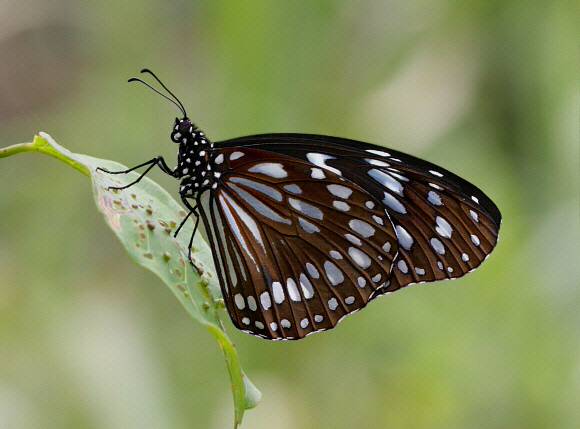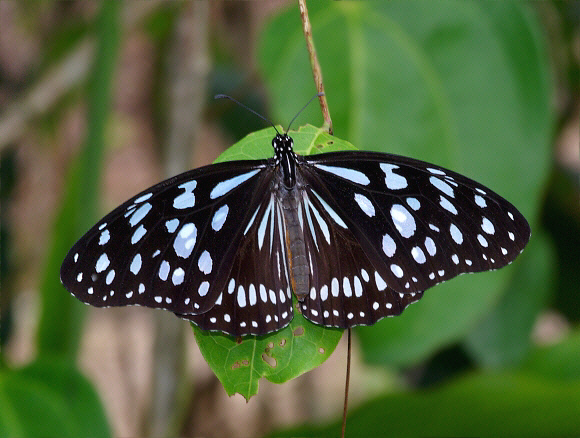
Introduction
The subfamily Danainae comprises of 3 tribes: the neotropical Ithomiini, the Tellervini of Papua New Guinea, and the Danaini which have representatives worldwide. The Danaini includes the Monarchs & Tigers, Nymphs and Crows, comprises of about 190 species in total.
There are 10 species in the genus Tirumala. The genus is centred on the Oriental region although one species hamata has a range extending from Arabia to Australia. There are two African species – formosa and petiverana.
All Tirumala species are toxic to birds. If a bird attacks and tastes a Tirumala it instantly vomits and suffers from nausea. Birds quickly learn to associate the colour and pattern of toxic butterflies with these unpleasant experiences, and are consequently deterred from attacking other butterflies of the same species. Several non-toxic butterflies have taken advantage of this fact, by evolving similar patterns which fool birds into leaving them alone, e.g. the colour and pattern of Tirumala petiverana is mimicked by at least two palatable species – the Veined Swallowtail Graphium leonidas and the Forest Queen Euxanthe eurinome.
Tirumala petiverana is a widespread species, found from Senegal and Guinea to Botswana.

Habitats
This species can be found in many habitats including Acacia scrub, dry woodlands, and clearings in rainforests.
Lifecycle
The larval foodplants include Hoya, Daemia, Pergularia and Marsdenia ( Asclepiadaceae ).
Adult behaviour
The butterflies are usually encountered singly or in two’s and three’s. They have a slow undulating flight, with fairly shallow wing beats, and patrol flowery areas.
